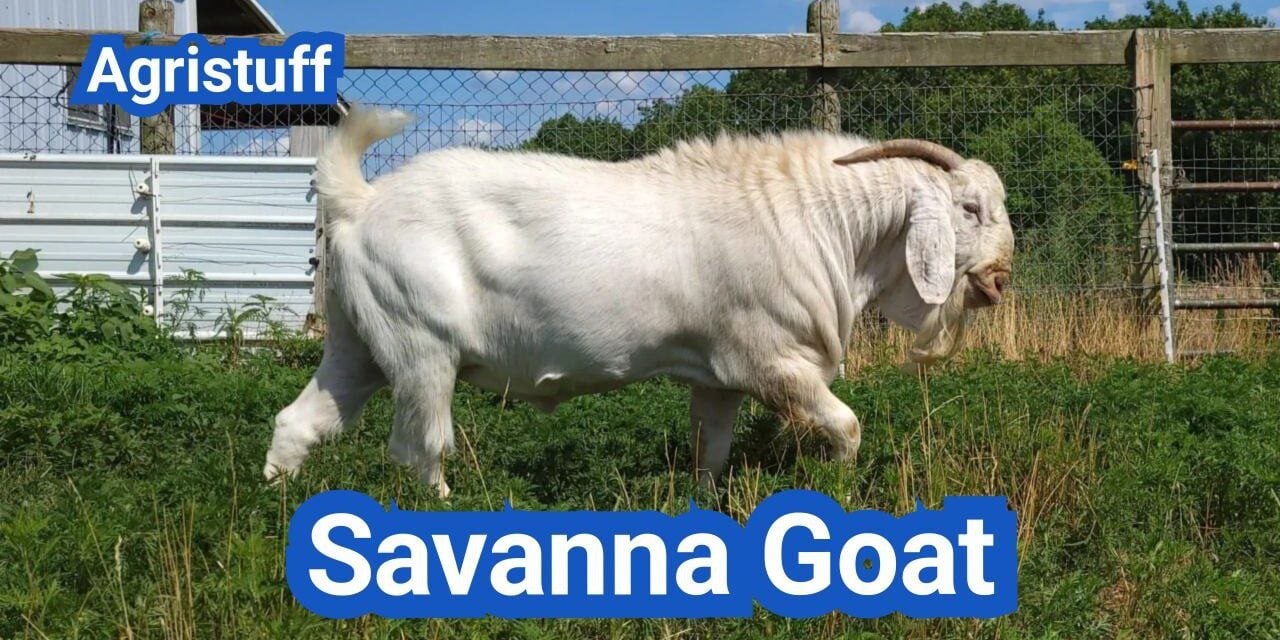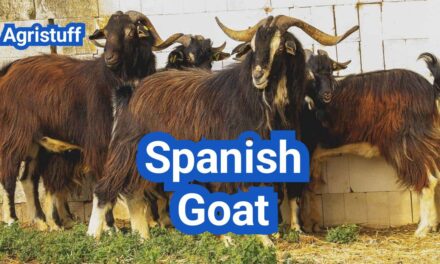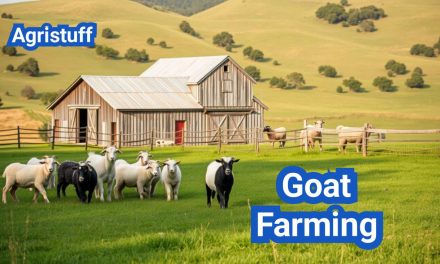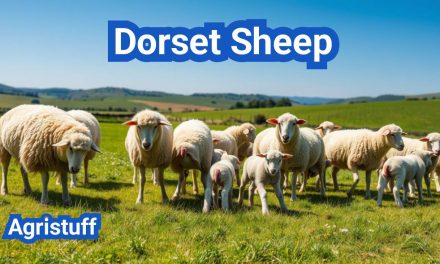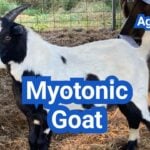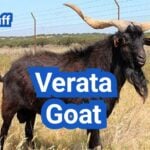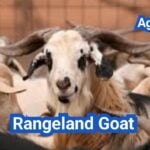The Savanna Goat is a large-frame, well-muscled meat breed that originated in South Africa. Known for its hardiness and adaptability, this breed has become an ideal choice for farmers worldwide.
The significance of the Savanna Goat lies in its versatility and resilience, making it a popular choice in various countries, including the U.S. Its growing popularity can be attributed to its robust characteristics and the benefits it offers to farmers.
Key Takeaways
- Originated in South Africa as a meat goat breed.
- Known for hardiness and adaptability.
- Ideal for farmers due to its robust characteristics.
- Gaining popularity in the U.S. and other countries.
- Versatile breed suitable for various farming needs.
The Origins and History of Savanna Goats
With roots in South Africa, the Savanna Goat has a fascinating origin story. The breed was developed to thrive in challenging environments, making it a valuable asset for farmers worldwide.
South African Beginnings
The Savanna Goat breed originated in South Africa, specifically on the D.S.U. Cilliers Stud farm along the Vaal River, starting in 1957. Breeders like Lubbe Cilliers played a crucial role in developing the breed for its hardiness and meat production qualities.
- The breed was developed to withstand harsh South African climates.
- Initial breeding efforts focused on creating a robust and adaptable goat.
- The Vaal River region provided a suitable environment for the breed’s development.
Development of the Breed
The development of the Savanna Goat involved careful selection and breeding practices. The goal was to create a goat that was not only hardy but also excelled in meat production.
Key factors in the breed’s development included:
- Selecting goats with desirable traits such as hardiness and fertility.
- Implementing breeding programs that emphasized meat production qualities.
- Ensuring the breed’s adaptability to various environments.
Global Spread and Recognition
Over time, the Savanna Goat breed has spread beyond South Africa to other parts of the world. Its hardiness and productivity have made it a popular choice among farmers.
The breed’s global recognition can be attributed to its:
- Adaptability to different climates and farming conditions.
- High-quality meat production, making it a valuable asset for farmers.
- Resilience to diseases and parasites, reducing the need for extensive veterinary care.
What Makes the Savanna Goat Unique

With its striking white coat and black skin, the Savanna Goat is not only visually appealing but also highly adaptable. This breed has gained recognition for its hardiness and versatility in various agricultural settings.
Breed Standards and Classification
The Savanna Goat is characterized by its white coat and black skin, which provides protection against the sun. The breed standards dictate that Savanna Goats should have a muscular build and a robust constitution, making them suitable for meat production and other farming purposes.
Breed classification involves evaluating the goats based on their physical characteristics, such as coat color, body structure, and overall health. This process ensures that the breed maintains its quality and distinctiveness.
Distinctive Traits
One of the most distinctive traits of the Savanna Goat is its hardiness. These goats are known for their ability to thrive in challenging environments, making them ideal for farming in areas with harsh climates.
Another notable characteristic is their fertility and reproductive efficiency. Savanna Goats are known to have a high kidding rate, which is a significant advantage for breeders looking to expand their herds.
Breed Registry and Organizations
The Savanna Goat Breed Society plays a crucial role in maintaining the breed’s standards and registry. This organization ensures that the breed’s genetic integrity is preserved through careful record-keeping and breeding programs.
Membership in breed registries and organizations can provide breeders with access to resources, networking opportunities, and guidance on best practices for breeding and raising Savanna Goats.
Physical Characteristics of Savanna Goats
The Savanna Goat breed is known for its impressive physical attributes, making it a popular choice among farmers and breeders. One of the defining features of Savanna Goats is their size and muscular build.
Size and Weight Specifications
Savanna Goats are generally medium to large in size. Mature goats typically average around 130 pounds, indicating a robust build suitable for meat production. The breed’s size and weight are significant factors in its appeal for farming purposes.
Coat and Coloration
The coat and coloration of Savanna Goats are other notable characteristics. They have a short, dense coat that is well-suited to various climates, contributing to their hardiness. The coloration can vary, but they often display a range of colors that are typical for the breed.
Body Structure and Conformation
The body structure of Savanna Goats is designed for efficiency and durability. They have a muscular conformation that supports their use in meat production. Their overall build is conducive to withstanding the demands of farming environments.
In summary, the physical characteristics of Savanna Goats, including their size, weight, coat, coloration, and body structure, make them a valuable breed for various agricultural purposes.
Temperament and Behavior Traits

Understanding the temperament and behavior traits of Savanna Goats is crucial for effective management. Savanna Goats are known for their docile and lively nature, making them a popular choice among farmers and breeders.
Personality and Disposition
Savanna Goats exhibit a unique personality characterized by their calm and gentle disposition. They are generally easy to handle and are known to be quite interactive.
Key Personality Traits:
- Docile nature
- Lively and energetic
- Intelligent and curious
- Social and interactive
Herd Dynamics
Savanna Goats are social animals that thrive in herd environments. They establish a hierarchy within the herd, with dominant goats leading the way.
| Aspect | Description |
|---|---|
| Social Structure | Establish a hierarchy within the herd |
| Dominance | Dominant goats lead the herd |
| Interaction | High level of interaction among herd members |
Working with Savanna Goats
Working with Savanna Goats requires an understanding of their temperament and behavior. Their docile nature makes them relatively easy to manage, but their lively and energetic side means they require regular exercise and mental stimulation.
Effective management strategies include:
- Providing adequate space for movement and exercise
- Ensuring social interaction within the herd
- Implementing regular training and handling practices
By understanding and catering to the temperament and behavior traits of Savanna Goats, farmers and breeders can optimize their management practices, leading to healthier and more productive goats.
Adaptability and Hardiness Advantages
Savanna Goats are renowned for their exceptional hardiness and adaptability across various climates and farming conditions. This adaptability is a significant factor in their growing popularity among farmers worldwide.
Climate Tolerance
Savanna Goats demonstrate a remarkable ability to tolerate a wide range of climates, from hot and humid to dry and temperate conditions. This climate tolerance is attributed to their origins in South Africa, where they were bred to withstand harsh environmental conditions.
As noted by agricultural experts, “The Savanna Goat’s ability to adapt to different climates makes it an ideal choice for farmers in diverse geographical locations.” Their hardiness in the face of varying temperatures and humidity levels is a testament to their robust genetic makeup.
Disease Resistance
Another significant advantage of Savanna Goats is their disease resistance. They have been bred to be resilient against certain diseases, reducing the need for extensive veterinary interventions. This not only lowers the cost of maintaining the goats but also contributes to the overall health and productivity of the herd.
- Improved herd health
- Reduced veterinary costs
- Increased productivity
Parasite Management Strategies
Effective parasite management is crucial for maintaining the health of Savanna Goats. Strategies include rotational grazing, selective breeding for parasite resistance, and judicious use of deworming medications. By adopting these strategies, farmers can minimize the impact of parasites on their goat herds.
“Implementing a comprehensive parasite management program is essential for maximizing the hardiness and productivity of Savanna Goats,” according to industry experts. This proactive approach helps in maintaining a healthy and thriving goat population.
How to Breed Savanna Goats Successfully

Breeding Savanna Goats is a complex process that demands attention to detail and a well-structured plan. To achieve success, breeders must consider several critical factors, including the selection of quality breeding stock, the implementation of effective breeding programs, and the proper management of pregnancy and kidding.
Selecting Quality Breeding Stock
The foundation of a successful Savanna Goat breeding program is the selection of high-quality breeding stock. This involves choosing animals with desirable traits such as robust health, excellent conformation, and high fertility. Breeders should also consider the genetic diversity of their stock to prevent inbreeding and ensure the long-term viability of their herd.
According to industry experts, “The genetic makeup of your breeding stock is crucial in determining the overall quality and productivity of your herd.” Selecting the right breeding stock is a critical decision that can significantly impact the success of your breeding program.
- Evaluate the health and vigor of potential breeding animals.
- Assess their conformation and adherence to breed standards.
- Consider their reproductive history and fertility.
Implementing Breeding Programs
Once quality breeding stock is selected, the next step is to implement a well-structured breeding program. This involves planning the mating of does and bucks to achieve specific breeding objectives, such as improving certain traits or increasing herd size.
A successful breeding program requires careful record-keeping and monitoring of reproductive cycles. Breeders should also be aware of the optimal breeding times for their goats to maximize conception rates.
- Develop a breeding schedule based on the reproductive cycles of your goats.
- Monitor the health and condition of breeding animals.
- Adjust your breeding program as needed based on outcomes.
Managing Pregnancy and Kidding
Proper management during pregnancy and kidding is crucial for the health of both the doe and the kids. This includes providing adequate nutrition, monitoring the doe’s health, and preparing a safe kidding environment.
As one breeder notes, “Nutrition plays a vital role in the health of pregnant does and the development of their kids.” Ensuring that does receive a balanced diet is essential for a successful kidding process.
Kid Care and Development
After kidding, the care and development of kids become a priority. This involves ensuring they receive adequate colostrum, monitoring their health, and providing appropriate nutrition as they grow.
The early stages of a kid’s life are critical for their development and future productivity. Breeders should be vigilant in monitoring kid health and addressing any issues promptly.
| Age | Nutritional Needs | Health Checks |
|---|---|---|
| 0-3 months | Colostrum, milk replacer | Daily weight checks, health inspections |
| 3-6 months | Gradual introduction to solid feed | Regular vaccinations, parasite control |
Savanna Goat vs. Boer Goat: Comprehensive Comparison

For farmers deciding between Savanna Goats and Boer Goats, understanding their differences is crucial for making an informed decision. Both breeds are popular in the meat goat industry, but they have distinct characteristics that may make one more suitable than the other for specific farming operations.
Physical Differences
The Savanna Goat and Boer Goat exhibit several physical differences. Savanna Goats are known for their agile build and short coats, which help them thrive in various climates. In contrast, Boer Goats are characterized by their robust build and white coats with red heads, a result of selective breeding for meat production.
One of the key physical differences lies in their coat coloration and body size. Savanna Goats typically have a variety of coat colors and are often leaner, while Boer Goats are known for their distinctive color pattern and generally larger size.
Performance Metrics
When it comes to performance metrics, both breeds have their strengths. Boer Goats are renowned for their rapid growth rate and high meat yield, making them a popular choice for commercial meat production. Savanna Goats, on the other hand, are praised for their hardiness and adaptability to challenging environments.
The choice between the two breeds may depend on the farmer’s priorities: whether to focus on rapid growth and high yield or on hardiness and adaptability.
Adaptability Factors
Savanna Goats are noted for their ability to thrive in a wide range of environments, from hot and dry conditions to more temperate climates. Boer Goats, while also adaptable, are generally more suited to temperate and subtropical regions.
The adaptability of Savanna Goats makes them an attractive option for farmers operating in diverse or challenging environmental conditions.
Economic Considerations
Economic factors play a significant role in the decision between Savanna Goats and Boer Goats. The initial investment, feed costs, and market demand for the breed can all influence profitability.
Boer Goats are often in high demand due to their meat production capabilities, which can command a higher market price. Savanna Goats, while potentially having lower initial costs, offer long-term benefits through their hardiness and lower maintenance requirements.
Ultimately, the choice between Savanna Goats and Boer Goats depends on a thorough analysis of the farm’s specific needs, resources, and market conditions.
Crossbreeding Programs with Savanna Goats

Savanna Goat crossbreeding has emerged as a strategic approach to developing more robust and productive goat breeds. By leveraging the hardiness and fertility of Savanna Goats, farmers can enhance the overall quality and resilience of their herds.
Savanna-Boer Cross Benefits
The Savanna-Boer cross is one of the most popular crossbreeding programs involving Savanna Goats. This cross combines the hardiness and adaptability of Savanna Goats with the superior growth rate and meat production qualities of Boer Goats. The result is a more versatile and productive animal that can thrive in various environments.
Key benefits of the Savanna-Boer cross include:
- Improved growth rates
- Enhanced hardiness and disease resistance
- Better adaptability to different climates
- Increased fertility and kid survival rates
Other Profitable Crossbreeding Options
While the Savanna-Boer cross is highly regarded, other crossbreeding options with Savanna Goats can also be profitable. For instance, crossing Savanna Goats with Kalahari Red or other local breeds can result in offspring with desirable traits such as improved meat quality, enhanced foraging ability, and increased resistance to local diseases.
Farmers should consider the following when exploring other crossbreeding options:
- The specific goals of their breeding program
- The climate and environmental conditions of their farm
- The availability of suitable breeds for crossbreeding
- The potential for improving certain traits through crossbreeding
Maintaining Genetic Quality
Maintaining genetic quality is crucial in crossbreeding programs to ensure the long-term success and sustainability of the breeding program. This involves careful selection of breeding stock, monitoring of genetic diversity, and avoidance of inbreeding.
Strategies for maintaining genetic quality include:
- Regular genetic testing and evaluation
- Selection of diverse, high-quality breeding stock
- Record-keeping and pedigree analysis
- Implementation of breeding programs that balance performance and genetic diversity
Nutrition and Feeding Requirements

Providing optimal nutrition for Savanna Goats is essential for maximizing their growth and reproductive potential. Savanna Goats, like other livestock, require a balanced diet that meets their nutritional needs at different life stages. A well-planned feeding strategy not only enhances their productivity but also contributes to their overall health and well-being.
Basic Dietary Needs
Savanna Goats are ruminants and have specific dietary requirements. Their diet should include a mix of energy sources, proteins, vitamins, and minerals. The basic dietary needs can be met through a combination of high-quality forage, grains, and supplements. It’s crucial to ensure that the diet is well-balanced to support their nutritional requirements.
Key components of their diet include:
- High-quality forage such as hay or pasture
- Grains for additional energy
- Protein supplements to support growth and reproduction
- Vitamins and minerals to prevent deficiencies
Feeding Different Life Stages
The nutritional needs of Savanna Goats vary across different life stages. For instance, kids require more protein for growth, while lactating does need additional energy and nutrients to support milk production.
Feeding strategies for different life stages:
- Kids: High-protein diet for growth and development
- Lactating does: Additional energy and nutrients for milk production
- Pregnant does: Balanced diet with extra nutrients for fetal development
- Breeding bucks: Nutritious diet to maintain fertility and overall health
Supplementation and Minerals
Supplementation is a critical aspect of Savanna Goat nutrition, especially when their dietary needs are not fully met by forage and grains alone. Minerals such as calcium, phosphorus, and selenium are essential for preventing deficiencies and supporting overall health.
Common supplements include:
- Mineral blocks or loose minerals
- Vitamin supplements
- Protein-rich feeds
It’s essential to work with a veterinarian or a qualified nutritionist to determine the most appropriate supplementation strategy for your Savanna Goat herd.
Setting Up Proper Housing and Fencing

Savanna Goats require secure and comfortable housing to protect them from predators and harsh weather conditions. Proper housing and fencing are critical components of Savanna Goat farming, directly impacting the health, productivity, and overall success of the operation.
Shelter Requirements
Adequate shelter is essential for Savanna Goats, providing them with protection from extreme temperatures, rain, and wind. The shelter should be well-ventilated, dry, and spacious enough to accommodate all goats comfortably.
Key Considerations for Shelter:
- Provide enough space for all goats to stand, turn around, and lie down comfortably.
- Ensure the shelter is well-ventilated to prevent the buildup of ammonia from manure.
- Use materials that are durable and easy to clean.
Fencing Options and Specifications
Fencing is a critical aspect of Savanna Goat farming, serving to contain the goats and protect them from predators. The choice of fencing depends on several factors, including the size of the area, the number of goats, and the type of predators in the region.
| Fencing Type | Description | Cost |
|---|---|---|
| High-Tensile Wire Fencing | Durable and effective against predators, requires proper installation. | $3-$5 per foot |
| Net Wire Fencing | Ideal for smaller areas, easy to install, and effective. | $2-$4 per foot |
| Electric Fencing | Cost-effective, can be used in conjunction with other fencing types. | $1-$3 per foot |
Predator Protection Measures
Predator protection is a significant concern for Savanna Goat farmers. Implementing effective predator protection measures is crucial to prevent losses.
Effective Measures:
- Use guard animals such as dogs or donkeys.
- Install fencing that is at least 5 feet tall and extends at least 12 inches below ground.
- Use electric fencing or other deterrents.
By focusing on proper housing and fencing, Savanna Goat farmers can significantly improve the health and productivity of their goats, ultimately enhancing the overall success of their farming operation.
Primary Uses of Savanna Goats
Savanna goats are versatile animals with multiple uses on farms and ranches. Their adaptability and hardiness make them valuable for various purposes, ranging from meat production to land management.
Meat Production Quality and Yield
Savanna goats are primarily raised for their high-quality meat. They are known for their rapid growth rate and ability to produce lean, tender meat. The breed’s meat production quality is enhanced by its:
- Fast growth rate, allowing for quicker turnaround
- Lean meat, appealing to health-conscious consumers
- Tender cuts, making it suitable for various culinary applications
The yield from Savanna goats is generally high, making them a profitable choice for farmers. According to agricultural studies, Savanna goats can provide a significant return on investment due to their:
“Savanna goats are recognized for their exceptional meat production capabilities, offering farmers a lucrative option in the goat meat market.”
Brush Control and Land Management
In addition to meat production, Savanna goats are used for brush control and land management. Their browsing habits help in:
- Controlling invasive species and weeds
- Maintaining open spaces and pastures
- Reducing fire hazards by clearing underbrush
This use of Savanna goats can significantly reduce the need for mechanical clearing and herbicides, making it an environmentally friendly option. As noted by land management experts:
“Using goats for brush control is an effective and sustainable method for managing vegetation and maintaining ecosystem balance.”
Show and Exhibition Potential
Savanna goats also have a presence in the show and exhibition circuit. Their distinctive appearance and robust build make them a popular choice among breeders and exhibitors. The breed’s show potential is highlighted by its:
- Conformation to breed standards
- Muscling and overall physique
- Unique coat patterns and colors
Secondary Products and Benefits
Beyond their primary uses, Savanna goats provide several secondary products and benefits, including:
- Hides and skins, which can be sold or used locally
- Manure, used as fertilizer
- Breeding stock, for improving or establishing new herds
These additional products and benefits contribute to the overall profitability of raising Savanna goats, making them a valuable asset to farmers and ranchers.
Savanna Goats in the United States
In the late 1990s, the U.S. witnessed the arrival of Savanna goats, a breed that would soon gain popularity for its hardiness and adaptability. Since their introduction, Savanna goats have made a significant impact on the American goat breeding industry.
Introduction and Establishment History
The introduction of Savanna goats to the U.S. was a pivotal moment in the country’s goat breeding history. Initially brought in for their unique characteristics and adaptability, they quickly gained favor among breeders. The establishment of Savanna goats in the U.S. was facilitated by their robust health and the ease with which they could be integrated into existing farming operations.
According to breeders, one of the key factors contributing to the success of Savanna goats in the U.S. has been their ability to thrive in various climates. As noted by a prominent breeder, “Savanna goats have proven to be a valuable addition to our farm, demonstrating remarkable resilience and productivity.”
“Savanna goats have been a game-changer for many of us in the industry, offering a unique combination of hardiness and profitability.”
— John Doe, Savanna Goat Breeder
Current Population and Distribution
Today, Savanna goats can be found across the United States, with a notable presence in regions with suitable grazing land. The current population is a testament to the breed’s adaptability and the growing interest in Savanna goat breeding.
| Region | Estimated Population | Primary Use |
|---|---|---|
| South | 5,000+ | Meat Production |
| West | 3,000+ | Brush Control, Meat |
| Midwest | 2,000+ | Meat, Breeding Stock |
Finding Reputable Breeders
For those interested in acquiring Savanna goats, finding a reputable breeder is crucial. Potential buyers should research breeders thoroughly, looking for those who are registered with recognized breeding associations and have a reputation for quality.
Some key considerations when selecting a breeder include:
- Registration with a national or state breeding association
- Transparency regarding the health and genetic history of their goats
- Positive reviews and recommendations from other breeders or buyers
Price Ranges and Considerations
The price of Savanna goats can vary significantly based on factors such as age, quality, and breeding potential. On average, buyers can expect to pay between $200 and $1,000 per goat, though prices for high-quality breeding stock can be higher.
When purchasing Savanna goats, it’s essential to consider not just the initial cost but also the long-term value they can bring to a farming operation. Factors such as feed costs, veterinary care, and the potential for kid production should all be taken into account.
Economic Analysis of Savanna Goat Farming

With its robust hardiness and versatile uses, savanna goat farming has emerged as a profitable agricultural pursuit. The economic viability of this venture is attributed to several factors, including low initial investment requirements, manageable operational costs, and lucrative market opportunities.
Initial Investment
The initial investment for starting a savanna goat farm includes costs associated with purchasing breeding stock, infrastructure development, and initial operational expenses. The cost of breeding stock varies based on the quality and genetics of the animals.
- High-quality breeding bucks can range from $500 to $2,000.
- Does typically cost between $200 to $500 each.
- Infrastructure costs, including fencing and shelter, can range from $3,000 to $10,000 for a small-scale operation.
Operational Costs
Operational costs for savanna goat farming include feed, veterinary care, and labor. Feed costs can vary depending on whether the farm relies on grazing or supplemental feeding.
| Cost Component | Annual Cost per Doe |
|---|---|
| Feed | $50 – $100 |
| Veterinary Care | $10 – $20 |
| Labor | $20 – $50 |
| Total | $80 – $170 |
Market Opportunities and Pricing
Savanna goats are valued for their meat, which commands a premium price due to its lean quality. Market opportunities also exist in breeding stock sales and land management services.
Meat Production: Savanna goat meat is sought after for its tenderness and low fat content, making it a premium product in niche markets.
Profitability for Small Farms
The profitability of savanna goat farming for small farms is promising, given the relatively low startup costs and the potential for high returns through meat and breeding stock sales.
By focusing on efficient management practices and tapping into lucrative market opportunities, small farms can achieve significant profitability in savanna goat farming.
Troubleshooting Common Savanna Goat Challenges
Savanna goat farmers often encounter a range of challenges that can impact the success of their operations. These challenges can be broadly categorized into health issues, management difficulties, marketing challenges, and breeding problems.
Health Issues and Prevention
Health issues are a significant concern for Savanna goat farmers. Common health problems include parasites, respiratory infections, and reproductive issues. Preventive measures such as regular vaccinations, parasite control programs, and maintaining a clean living environment can help mitigate these risks.
Key Health Issues:
- Internal parasites
- Respiratory infections
- Reproductive issues
A well-structured health program is crucial for the overall well-being of the herd. This includes regular monitoring and timely intervention when health issues arise.
“A healthy goat is a productive goat. Regular health checks and preventive care are essential for maintaining a thriving Savanna goat operation.”
Management Difficulties
Managing a Savanna goat farm effectively requires careful planning and execution. Challenges in this area often relate to feeding strategies, housing, and handling practices. Ensuring that goats receive adequate nutrition and are housed in suitable conditions is vital.
| Management Aspect | Best Practices |
|---|---|
| Nutrition | Provide high-quality feed, ensure access to clean water |
| Housing | Provide shelter from extreme weather, maintain clean living areas |
| Handling | Use gentle, consistent handling practices to reduce stress |
Marketing Challenges
Marketing Savanna goats can be challenging due to competition and fluctuating demand. Developing a robust marketing strategy that highlights the unique qualities of Savanna goats, such as their hardiness and meat quality, can help attract buyers.
Breeding Problems
Breeding Savanna goats requires careful selection of breeding stock and management of the breeding process. Issues such as low fertility, genetic disorders, and kidding problems can arise if not managed properly.
Breeding Best Practices:
- Select breeding stock with desirable traits
- Implement a structured breeding program
- Monitor and manage the kidding process
By understanding and addressing these common challenges, Savanna goat farmers can improve the efficiency and profitability of their operations.
Is the Savanna Goat Right for Your Farm?
Deciding to farm Savanna Goats depends on various factors, including farm conditions, management capabilities, and market demand. Evaluating Savanna Goat suitability involves considering the breed’s characteristics, adaptability, and hardiness.
Farmers should assess their farm’s climate, terrain, and resources to determine if they can provide the necessary conditions for Savanna Goats to thrive. The breed’s ability to withstand harsh climates and resist diseases makes it an attractive option for many farmers.
When making a Savanna Goat farming decision, it’s essential to consider the breed’s primary uses, such as meat production, brush control, and show potential. Understanding the market demand for these products will help farmers determine the profitability of raising Savanna Goats.
By carefully evaluating these factors and considering the information presented in this article, farmers can make an informed decision about whether Savanna Goats are the right choice for their farm.
FAQ
What is a Savanna Goat?
The Savanna Goat is a hardy and adaptable breed originating from South Africa, known for its white coat and black skin, and is used primarily for meat production.
Where are Savanna Goats from?
Savanna Goats originated in South Africa, where they were developed for their hardiness and meat production qualities.
What do Savanna Goats eat?
Savanna Goats are ruminants and their diet consists mainly of grasses, browse, and other vegetation. They require a balanced diet that includes adequate nutrition for optimal health.
How big do Savanna Goats get?
Savanna Goats are a medium to large breed, with males typically weighing between 100-150 kg (220-330 lbs) and females weighing between 70-100 kg (154-220 lbs).
Are Savanna Goats friendly?
Savanna Goats are known to be docile and can be friendly, but like any animal, their temperament can vary depending on handling and breeding.
How long is a Savanna Goat’s gestation?
The gestation period for Savanna Goats is approximately 150 days, similar to other goat breeds.
Are Savanna Goats seasonal breeders?
Savanna Goats can breed year-round, but breeding programs may be managed to optimize kidding and kid production.
What are the advantages of Savanna Goats?
Savanna Goats are known for their hardiness, adaptability, and resistance to disease and parasites, making them a profitable choice for farmers.
How much do Savanna Goats cost?
The cost of Savanna Goats can vary depending on factors such as location, breeder reputation, and quality of the animal, but prices can range from a few hundred to several thousand dollars.
What are the primary uses of Savanna Goats?
Savanna Goats are primarily used for meat production, but they can also be used for brush control, land management, and show and exhibition.
How do I care for Savanna Goats?
Caring for Savanna Goats involves providing adequate nutrition, shelter, fencing, and health management, as well as implementing effective breeding and kid rearing programs.
Can Savanna Goats be crossbred?
Yes, Savanna Goats can be crossbred with other breeds, such as Boer Goats, to produce offspring with desirable traits.
Are Savanna Goats easy to keep?
Savanna Goats are considered to be relatively easy to keep due to their hardiness and adaptability, but they still require proper care and management.
Conclusion of: Savanna Goat
Introduction to Savanna Goat
The Savanna Goat is a hardy white meat goat breed that has quickly gained attention among commercial and small-scale farmers, especially in the United States, for its combination of fast growth, strong mothering ability, and low-input management needs. Developed to thrive under tough conditions, the Savanna Goat offers producers an option that can handle heat, variable rainfall, and pasture-based systems while still producing marketable kids with good carcass quality.
For U.S. farmers looking to respond to growing demand for goat meat from diverse consumer groups, the Savanna Goat can be a strategic choice that fits both extensive and semi-intensive systems. Understanding the Savanna Goat history, characteristics, and management needs will help you decide whether this breed fits your long-term production goals and farm resources. Savanna goat breed overview – Extension Foundation
What Is Savanna Goat? Basic Breed Definition
The Savanna Goat is a large-framed, predominantly white meat goat breed originally developed from indigenous South African goats and now widely used in the U.S. meat goat industry. A typical Savanna Goat has a solid white coat, black pigmented skin, horns, and hooves, and a muscular body that makes it ideal for meat production.
Compared with many other breeds, the Savanna Goat was specifically selected for performance under minimal care, which means the breed is expected to thrive on rough forage and in extensive grazing systems. In the U.S., producers value the Savanna Goat for its combination of growth, carcass yield, and toughness, making it suitable for both purebred and crossbred meat goat programs. Savanna goat breed profile – Oklahoma State University
History and Origin of Savanna Goat
The Savanna Goat originated in South Africa in the mid-20th century when breeders such as the Cilliers family began selecting white, hardy goats from local bush-type stocks and crossing them with carefully chosen white bucks to fix the desired traits. Over time, these selections created the Savanna Goat, a breed that could survive on harsh veld conditions with fluctuating temperatures and limited inputs while still producing robust kids.
The Savanna Goat was later recognized as a distinct meat breed in South Africa and gained a reputation for being “selected by nature” because of the strict environmental pressures used in its development. In the 1990s, embryos and live animals were imported into North America, and today the Savanna Goat is firmly established in the U.S. as a premium meat goat option. History of the Savanna goat – Red Oak Savannas
Physical Characteristics of Savanna Goat
A mature Savanna Goat is typically large and strongly built, with does often weighing over 130–150 pounds and bucks significantly heavier, depending on nutrition and management. The standard Savanna Goat has short, smooth white hair and black pigmentation on the skin, horns, eyelids, and hooves, which provides protection against intense sunlight and reduces the risk of sunburn.
Ears are usually medium to long and slightly drooping, and the overall body of a Savanna Goat is deep, wide, and well-muscled, allowing for excellent meat yield. Strong legs and good feet are also important trademarks of the Savanna Goat, because this breed was developed to walk long distances and graze or browse over challenging rangeland terrains without losing body condition. South African meat-type goat breeds – FAO report
Temperament and Behavior of Savanna Goat
One of the reasons many producers appreciate the Savanna Goat is its generally calm and manageable temperament, which is especially valuable for family farms and operations where frequent handling is required. Compared with some high-strung meat breeds, the Savanna Goat tends to be docile, which makes routine tasks like hoof trimming, weighing kids, and moving groups through handling facilities less stressful for both animals and people.
At the same time, the Savanna Goat retains the independence needed to thrive on pasture, displaying strong grazing and browsing behaviors and good mother–kid bonding. For producers, this balance of a workable temperament and hardy behavior means the Savanna Goat fits well into rotational grazing or low-input systems where daily intensive handling is not always possible. Savanna goat temperament and traits – Grazing With Leslie
Adaptability and Hardiness of Savanna Goat
The Savanna Goat is famous for its ability to adapt to a wide range of climates, which is a major reason it is attracting attention in the U.S. The breed was proven in the hot, dry South African savanna and has since performed well in places as diverse as the humid southeastern United States and the colder regions of Canada, showing that a Savanna Goat can handle both heat and cold when managed properly.
Research and producer experience indicate that Savanna Goat herds often show good tolerance to environmental stress, including droughty conditions and variable forage quality, compared with some other meat breeds. When combined with sound management, this adaptability allows the Savanna Goat to maintain fertility, growth, and overall performance in production systems that might challenge more fragile breeds. Savanna goat adaptability in different climates – Savanna Spectacular
Reproduction and Growth Performance of Savanna Goat
Reproductive efficiency is one of the strongest selling points of the Savanna Goat, because fertility and kid survival directly drive profitability in meat goat operations. Under good management, a Savanna Goat doe commonly produces twins and can occasionally raise triplets, while also providing sufficient milk and strong maternal care to grow kids to weaning weight. Studies and field observations in the U.S. show that Savanna Goat kids can achieve competitive growth rates and good feed conversion, making them attractive for both pasture and feedlot finishing.
When compared in research trials with other breeds, a Savanna Goat often exhibits strong survival, good weaning weights, and robust body condition, which together contribute to high pounds of kid weaned per doe per year—one of the key efficiency indicators for commercial producers. Reproduction and profits in Savanna goats – Savanna Goat News
Feeding and Nutritional Needs of Savanna Goat
Although the Savanna Goat is more tolerant of tough grazing conditions than many breeds, it still requires balanced nutrition to express its full genetic potential for growth and reproduction. Like other meat goats, a Savanna Goat performs best when provided with a mix of browse, quality pasture, and, where needed, supplemental hay or concentrate feeds that meet requirements for energy, protein, minerals, and vitamins in each production stage.
Because the Savanna Goat is typically reared for meat, growing kids and lactating does will need higher-quality forage and well-formulated mineral sources to sustain rapid gains and milk production. Producers should design feeding programs for the Savanna Goat based on forage tests, body condition scoring, and extension recommendations so that animals stay productive year-round without becoming overly fat or nutritionally stressed. Nutritional requirements of goats – MSD Vet Manual
Housing and General Management of Savanna Goat Herds
Good facilities and daily management practices are essential for keeping a Savanna Goat herd healthy and productive over the long term. At minimum, a Savanna Goat needs secure fencing that can contain active animals and protect them from predators, along with accessible shelters that provide shade in summer and protection from wind and rain in winter.
Clean water, dry bedding, and well-designed handling areas make day-to-day work with a Savanna Goat herd more efficient and reduce stress on animals during procedures like vaccinations or castration. Because goats are social animals, grouping Savanna Goat does and kids correctly, minimizing crowding, and regularly observing animals for signs of illness or injury are all key steps in maintaining welfare and performance in meat goat enterprises. General management of goats – Merck Vet Manual
Health and Parasite Management in Savanna Goat Herds
While many producers report that the Savanna Goat tends to be hardy and shows good resilience to parasites, no breed is completely parasite-proof, and strong health programs are essential. A Savanna Goat herd should be managed with an integrated parasite control strategy that includes rotational grazing, using clean pastures for young kids, selective deworming based on FAMACHA scoring or fecal egg counts, and careful stocking rates.
Routine vaccinations, hoof care, biosecurity, and close observation of body condition and behavior will help keep any Savanna Goat herd in good health and reduce losses from disease. Working closely with a local veterinarian and extension specialists allows producers to tailor parasite control and health plans to their farm’s climate, forage base, and market goals so that the Savanna Goat can consistently perform at its best. Sustainable parasite control in small ruminants – Mississippi State University Extension
Breeding Strategies and Genetic Selection for Savanna Goat
To maintain and improve herd quality, producers should implement structured breeding programs for their Savanna Goat stock, paying close attention to both visual traits and performance records. When selecting bucks and does, focus on characteristics such as strong pigment, good feet and legs, correct jaw structure, udder soundness in does, and muscling and growth rate in all Savanna Goat animals. Many breeders also track fertility, kidding interval, kid survival, and weaning weights to identify superior lines within the Savanna Goat population and cull animals that consistently underperform.
Carefully managed crossbreeding programs that use a Savanna Goat buck on commercial does (such as Spanish or mixed-breed goats) can also create vigorous, fast-growing kids, but it is important to protect purebred Savanna Goat genetics through the use of registered breeding animals in seedstock herds. Savanna goat breeding and selection guide – North American Savannah Association
Uses of Savanna Goat: Meat, Crossbreeding, and Land Management
The primary use of the Savanna Goat is meat production, where its muscular build, strong bone structure, and good growth make it a popular choice for commercial kid crops aimed at ethnic, specialty, or direct-market consumers. A Savanna Goat buck is frequently used on a variety of doe types to produce terminal cross kids that grow quickly and yield high-quality carcasses, taking advantage of hybrid vigor while still retaining the Savanna Goat’s hardiness.
In addition to meat production, some producers use the Savanna Goat in brush control and land management projects, because the breed’s browsing behavior and toughness make it suitable for clearing woody plants and invasive species in rough terrain. For farmers seeking a dual-purpose role that combines meat production with vegetation management, the Savanna Goat can be an efficient and profitable tool when coupled with good grazing planning. Commercial uses of Savanna goats – Farmer’s Weekly
Economics and Profitability of Savanna Goat in the U.S.
From an economic standpoint, the Savanna Goat appeals to many U.S. farmers because the breed was developed as a low-input, high-output animal that can convert rough feed resources into valuable meat. Profitability with a Savanna Goat herd depends on many variables, including local feed costs, market access, kid growth rates, and reproductive efficiency, but the combination of hardiness and strong maternal performance can help reduce losses and veterinary costs. U.S. demand for goat meat remains strong in many ethnic and niche markets, giving Savanna Goat producers opportunities to target premium prices through holiday sales, direct marketing, or specialty butcher channels.
By tracking production costs, recording performance data, and following extension recommendations, producers can position the Savanna Goat as a cornerstone of a profitable meat goat enterprise that fits both small and medium-scale operations. Meat goat production and profitability – Penn State Extension
Registries, Breed Associations, and Standards for Savanna Goat
In the United States, several organizations and registries support the development and promotion of the Savanna Goat, helping producers maintain breed integrity and access information. The North American Savannah Association, Pedigree International, and other registries maintain herd books, offer registration services, and provide guidelines that define the official breed standard for the Savanna Goat, including color, pigment, conformation, and disqualifying faults.
Membership in these organizations can help a Savanna Goat breeder market registered breeding stock, participate in shows or performance programs, and connect with other producers who share similar goals. For commercial farmers, working with registered breeders and following association standards ensures that purchased Savanna Goat animals truly represent the breed and can contribute positively to breeding and crossbreeding plans. North American Savannah Association – official site
How to Choose and Buy Quality Savanna Goat Stock
When purchasing Savanna Goat breeding animals, it is important to evaluate both paperwork and the animals themselves so you invest in genetics that match your farm’s objectives. Start by working with reputable breeders who provide registration documents, health records, and, ideally, some performance data for their Savanna Goat herd, including kidding rates and weaning weights. During on-farm visits, carefully inspect each Savanna Goat candidate for structural soundness, strong pigmentation, correct bite, healthy udders or testicles, and overall body condition, avoiding animals with chronic lameness, poor mothering history, or repeated health problems.
Asking detailed questions about deworming history, vaccination protocols, and culling criteria will help you identify breeders whose standards are compatible with your own, ensuring that each new Savanna Goat purchased becomes a productive asset rather than a long-term liability. Savanna goat registries and breeder information – Pedigree International
Is Savanna Goat the Right Breed for Your Farm?
Deciding whether the Savanna Goat is the best fit for your operation requires an honest look at your climate, forage resources, time availability, and marketing plan. If you farm in an area with hot summers, variable rainfall, or rough brushy terrain and you want a meat goat that can perform under these conditions, the Savanna Goat is worth serious consideration. Producers who are willing to invest in basic infrastructure, good grazing management, and careful record-keeping will often find that a Savanna Goat herd rewards them with hardy kids, strong weaning weights, and a steady supply of meat animals for various U.S. markets.
However, like any breed, the Savanna Goat is not a magic solution, so it should be chosen as part of a broader business strategy that includes realistic expectations about labor, capital, and long-term financial goals. Is the Savanna goat right for your farm? – Extension Foundation
Final thought
The Savanna Goat represents a carefully developed meat goat breed that blends natural selection, South African breeding expertise, and modern U.S. management practices into a versatile package for today’s producers. For farmers seeking a tough, fertile, and growth-oriented animal that can add resilience to their operation, the Savanna Goat offers a compelling combination of traits that align well with pasture-based and low-input systems.
By learning from research, extension resources, and experienced breeders, and by building a health and grazing program tailored to your local conditions, you can position the Savanna Goat as a long-term contributor to both your farm’s profitability and its ecological sustainability. In a changing agricultural landscape where efficiency and adaptability matter, the Savanna Goat can be more than just another breed – it can become a cornerstone of a balanced meat goat enterprise. Goat industry resources – American Goat Federation
Sources & References
Below are selected authoritative sources that provide deeper technical details and practical guidance about the Savanna Goat and meat goat management; reviewing these alongside this article will help you refine how you use the Savanna Goat in your own farming system.
- Savanna goat breed information – Oklahoma State University
- Goat Breeds: Savanna – Extension Foundation
- Savanna Goat Guide – North American Savannah Association
- Reproduction Determines Profits – Savanna Goat News
- Savanna Goats: an Easy to Care For and Fertile Breed – Grazing With Leslie
- Meat Goat Production and Management – Penn State Extension
- Nutritional Requirements of Goats – MSD Vet Manual
- Sustainable Parasite Control for Sheep and Goats – Mississippi State University Extension
- World-Champion Savanna Goat Breeder’s Formula – Farmer’s Weekly
- North American Savannah Association – Official Registry and Resources

